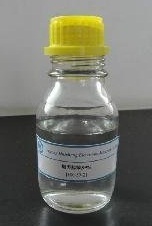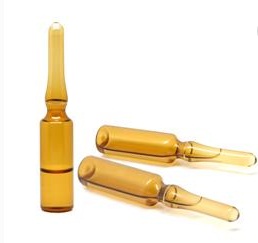| Identification | More | [Name]
Diallyl sulfide | [CAS]
592-88-1 | [Synonyms]
2-PROPENYL SULPHIDE
ALLYL SULFIDE
ALLYL SULPHIDE
DIALLYL SULFIDE
DIALLYL SULPHIDE
Diallyl thioether
FEMA 2042
THIOALLYL ETHER
(CH2=CHCH2)2S
1-propene,3,3’-thiobis-
3-(Allylsulfanyl)-1-propene
3,3’-thiobis-1-propen
3,3’-thiobis-1-Propene
3,3-Thiobis(1-propene)
Allyl monosulfide
allylmonosulfide
di-2-propenyl sulfide
Diallyl monosulfide
Diallyl thioather
diallylmonosulfide | [EINECS(EC#)]
209-775-1 | [Molecular Formula]
C6H10S | [MDL Number]
MFCD00008658 | [Molecular Weight]
114.21 | [MOL File]
592-88-1.mol |
| Chemical Properties | Back Directory | [Appearance]
clear colorless liquid | [Melting point ]
-83 °C | [Boiling point ]
138 °C(lit.) | [density ]
0.887 g/mL at 25 °C(lit.)
| [vapor density ]
3.9 (vs air)
| [vapor pressure ]
7 mm Hg ( 20 °C)
| [FEMA ]
2042 | [refractive index ]
n20/D 1.490(lit.)
| [Fp ]
115 °F
| [storage temp. ]
2-8°C
| [solubility ]
3mg/mL in ethanol;5mg/mL in DMSO;10mg/mL in dimethyl formamide | [form ]
Liquid | [color ]
Clear colorless | [Odor]
at 0.10 % in propylene glycol. sulfurous onion garlic horseradish metallic | [biological source]
synthetic | [explosive limit]
1.1%(V) | [Odor Threshold]
0.00022ppm | [Odor Type]
sulfurous | [Water Solubility ]
Soluble in alcohol, chloroform, ether, and carbon tetrachloride. Insoluble in water. | [JECFA Number]
458 | [Merck ]
14,297 | [BRN ]
1736016 | [Dielectric constant]
4.9(20℃) | [InChIKey]
UBJVUCKUDDKUJF-UHFFFAOYSA-N | [LogP]
2.61 | [CAS DataBase Reference]
592-88-1(CAS DataBase Reference) | [NIST Chemistry Reference]
1-Propene, 3,3'-thiobis-(592-88-1) | [EPA Substance Registry System]
592-88-1(EPA Substance) |
| Safety Data | Back Directory | [Hazard Codes ]
Xi | [Risk Statements ]
R10:Flammable.
R36/37/38:Irritating to eyes, respiratory system and skin . | [Safety Statements ]
S26:In case of contact with eyes, rinse immediately with plenty of water and seek medical advice .
S36:Wear suitable protective clothing .
S37/39:Wear suitable gloves and eye/face protection .
S23:Do not breathe gas/fumes/vapor/spray (appropriate wording to be specified by the manufacturer) .
S16:Keep away from sources of ignition-No smoking . | [RIDADR ]
UN 1993 3/PG 3
| [WGK Germany ]
2
| [RTECS ]
BC4900000
| [TSCA ]
Yes | [HazardClass ]
3 | [PackingGroup ]
III | [HS Code ]
29309070 | [Hazardous Substances Data]
592-88-1(Hazardous Substances Data) |
| Questions And Answer | Back Directory | [General Description]
Diallyl sulfide refers to the following 4 ingredients: diallyl monosulfide, diallyl disulfide, diallyl trisulfide and diallyl tetrasulfide, which exist in putrefaction decomposer of vegetables, green onion and the fruit of.cruciferous plants. As the main component of garlic extract, it is featured with strong anti-cancer, anti-virus, antibacterial activity, strong inhibition of platelet aggregation and immunity improvement. It has been widely used in the industries such as medical and health, fodder and the like.
| [Physical & Chemical Properties]
It is an oily substance scented with garlic. Boiling point: 139 ° C (101.056Pa), relative density: 0.8876, refractive index: 1.4877. Soluble in organic solvents such as ether and the like, insoluble in water. Also it can be oxidized to diallyl sulfone.

Figure 1: Diallyl Disulfide

Figure 2: Diallyl trisulfide | [Preparation Method]
The two main methods for preparation of diallyl sulfide are: biological extraction and chemical synthesis.The more common biological extraction methods are steam distillation, organic solvent extraction and supercritical CO2 extraction. Steam distillation is to use water as a solvent, then heat under a certain pressure to extract the soluble active ingredients from the natural products. The advantage of this method is that it is simple to operate and suitable for the extraction of active ingredients that are generally easier to extract. Its disadvantages include the greater loss of the active ingredients in the thermosensitives, lower yield, and that the active ingredients in the extract are not easily separated.
Process for allicin extraction: fermentation temperature: 50 ~ 55 ℃, fermentation duration: 2h ~ 3h, add water into the garlic with the proportion of 1: 4 water, distilled for the duration of 1.5h ~ 2h.
Organic solvent extraction method is to use organic solvent as extraction agent, and extract the active ingredients of natural products at a certain temperature and extraction duration. Usually methanol, ethanol, acetone, ethyl ether or the mixture of these solvents are used as the organic solvents. Compared withthe steam distillation extraction, the advantage of the organic solvent extraction is that the extract has higher purity. Also it is one of the traditional extraction methods.
Use ethanol with volume fraction of 95% as the extraction solvent, and add the extractant in proportion of 1g: 4mL. First the enzymolysis time was 0.5h when the temperature is set to 40 ℃; then have the extraction for 1.5h when the temperature is set to 30 ℃; finally set the temperature at 50 ℃, and have it concentrated under reduced pressure in a steamer rotating at a speed of 4500r / min to extract allicin. The extraction rate can reach 0.24%.Mix Na2S2O3•5H2O62g (0.25mol) and 3-bromopropene 24g (0.20mol) in ethanol - water (V ethanol: V water = 60:40) evenly and reflux to homogeneity. Add 30mL of concentrated hydrochloric acid, reflux for 5h, standing still, then separate the upper layer and put it into 100mL10% NaOH solution placed in an ice bath, add 80mL of 25% K3Fe (CN) 6 (6mmol) aqueous solution while stirring and stop after 2.5h. Separate the organic layer and dry it over anhydrous sodium sulfate. Then filter off the desiccant, recover the solvent, and finally 6.6 g of pale yellow oily substance will be obtained. 
Figure 3: Synthetic route | [Uses]
Used as a reagent.
Used in the industries such as medical and health, fodder and the like.
| [Toxicity]
GRAS(FEMA)�。 | [Maximum limits]
FEMA (mg / kg): Drinks 0.04; Cold Drink 0.06; Confectionery 0.07; Bakery Products 0.05; Seasoning 13; Meat 3.7.
FDA, § 172.515: Appropriate amount.
|
| Hazard Information | Back Directory | [Chemical Properties]
A colorless liquid with characteristic garlic odor. Oil-soluble component of garlic | [Chemical Properties]
clear colorless liquid | [Occurrence]
Reported found in garlic (Allium sativum L.), onion (Allium cepa L.), nira (Allium tuberosum Rottl.), caucas
(Allium victoralis L.), mustard (Brassica species) and cooked/boiled beef | [Definition]
ChEBI: Diallyl sulfide is an organic sulfide. | [Preparation]
From allyl iodide plus potassium sulfide in alcoho | [Aroma threshold values]
Detection at 0.05 ppb | [Taste threshold values]
Taste characteristics at 2 ppm: sulfureous, onion–garlic and vegetative radish-like with a slightly hot nuance | [Biochem/physiol Actions]
Organosulfur compound from garlic that inhibits chemically-induced carcinogenesis in experimental animals. Competitive inhibitor of Cytochrome P450 2E1 (CYP2E1) that, in turn, blocks the activation of several chemcal carcinogens. | [Anticancer Research]
It is a thioether, found in garlic, inhibits cytochrome P450 IIE1 isoform, and therebysuppresses carcinogenesis (Aggarwal and Shishodia 2004). The consumption ofgarlic provides protection from gastrointestinal cancers and also suppresses theprogression of colorectal adenomas (Hosseini and Ghorbani 2015). |
|
|